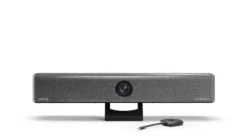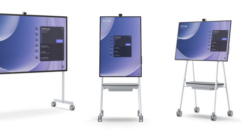
Top 3 Wireless Microphone Problems and How to Solve Them
Aug 14, 2013 11:01 AM,
By Chris Regan, CEO of RF Venue

Image courtesy of Lectrosonics, via Craig Smith
Wireless microphones are prone to interference, noise, drop-outs, and many more bothersome RF problems. These problems can be disastrous for both live productions and installed systems. Everyone remembers an embarrassing time when a wireless mic suffered harsh static or intermittent dropouts. Even brief malfunctions can destroy a presentation or performance, and drive everyone involved crazy. Below are the three most common problems, and a few basic techniques to solve them.
1. Signal Dropouts and Multi-path Interference
Multi-path interference is caused by portions of the RF energy arriving at the antenna at slightly different times. As a transmitted wave spreads, it encounters surfaces that reflect or absorb different parts of the wave. And as these waves bounce off and around surfaces, they arrive at the receiver at slightly different times and thus out of phase—creating dropouts and dead spots for your wireless microphones. This is a common problem for wireless microphone systems indoors, where there are many opportunities for the RF energy to reflect off surfaces.
Multi-path is particularly problematic for microphones since they may be in motion and change angles. So before show time, diagnose your performance space for multi-path by simulating the motion of the talent, and walk around the entire area with a mic while monitoring RF signal level and audio at the receiver position.
Curing multi-path interference is usually easy. The diversity microphone receiver was designed to reduce the types of interference caused by multi-path, and virtually all professional mic systems use this scheme today. They use two antennas that have different perspectives, instead of one, and employ a switching function that discriminates between the relative strength of the two signals. The odds that a null develops at both antennas is much lower than with a single antenna.
The design of the diversity receiver can solve one problem while introducing another, however: A poor signal will often cause the system to rapidly switch back and forth between antennas, leading to quick dropouts, and swooshing sounds caused by switching noise.
If your system is encountering multi-path interference the first thing to do is to re-locate your receivers—or better yet, install a good remote antenna system.

Before / After RF Spotlight RF Scan
IMAGE SOURCE: RF Venue
2. Noise Floor and Interference
It’s important to understand that all environments are a soup of radio waves. Most of that energy is caused by other electronic devices emitting stray (unintended) RF—computers, hair dryers, pencil sharpeners, lighting, power supplies—just about any powered device. And even in the remotest desert, cosmic radiation and natural radiation generated by the earth causes noise.
An RF system—such as a wireless microphone—needs a sufficient signal-to-noise ratio to stay above this ever-present ambient noise floor. Maintaining high signal-to-noise ratio for your wireless mics is aided by isolating the signal and directing it to only where it is needed. The closer wireless receivers are to wireless mics, the better. This gives your transmitter and receiver a shorter distance and stronger signal, which presents a higher signal over the noise floor at the receiver.

IMAGE SOURCE: Measurementest.com.
3. Intermodulation Distortion and Frequency Coordination
Frequency coordination is essential in wireless systems to avoid not only third-party transmitters but also the harmful effects of Intermodulation Distortion (also referred to as IMD or “intermod”). IMD is the result of two or more signals passing through a non-linear device, such as a diode or an amplifier. IMD manifests itself as ghost signals from wireless mic bodypacks or handheld transmitters. These appear at predictable frequencies in the RF spectrum. If these ghosts are too close to one of the frequencies used by your microphone, audible distortion can result.
By carefully selecting frequencies, we can force the distortion to occur only at frequencies that we don’t care about, and avoid those interference events. This is most commonly achieved through determining an intermod-free set of frequencies, which can be accomplished through various software tools like Shure’s Wireless Workbench, IAS, and even onboard some receivers.
The wireless landscape continues to quickly evolve as more and more devices pile into the spectrum. With each new development, the challenges faced by audio professionals multiply. Thankfully, new methods and technologies are emerging to confront these problems and narrow the gap between the performance of wired and wireless systems.
Read more at www.rfvenue.com/blog.










